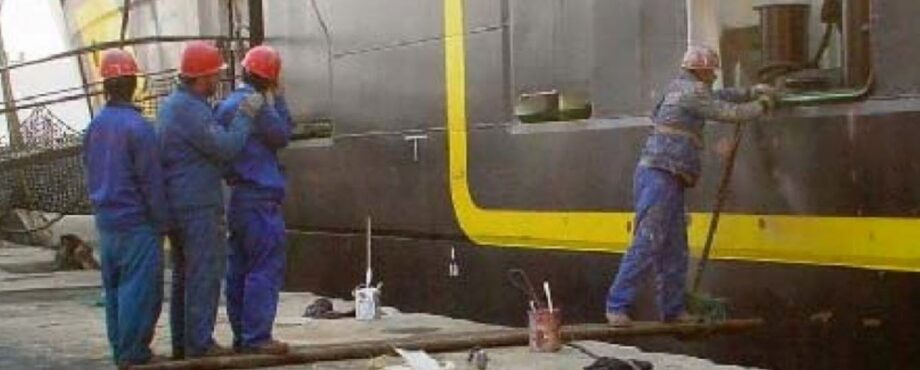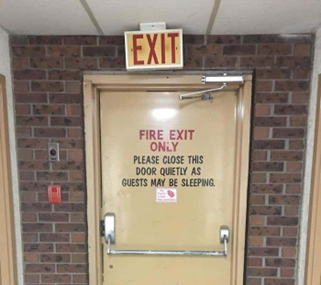Back to Blog
Improving Safety Through Understanding Human Behavior

“God watches out for drunks and sailors.” There are many variations on this old saying, often adding or substituting “fools” or “children.” The saying is a nod to the miraculous dumb luck when someone doesn’t get hurt doing something that’s not very bright.
Rather than rely on luck or providence, better is for the designer of the involved system or equipment to do what they can to “sailor-proof” the item or arrangement from the beginning. Designers can improve their efforts in doing so by understanding certain principles of human behavior commonly exhibited by the users of systems and equipment. The semi-amusing – but serious – human behavior insights provided below are excerpted from Section 4.2 of ASTM F1166-07 Standard Practice for Human Engineering Design for Marine Systems, Equipment, and Facilities. They are written about maritime personnel, but are widely applicable.
- If the design of the ship or maritime facility is considered to be unsafe or inefficient by the crew, it will be modified by the users, often solving the initial problem but introducing others that may be as bad, or worse, than the original.
- If equipment or systems are perceived by operators/maintainers to be too complex or require more effort to operate or maintain than they believe is necessary, they will always look for a “shortcut.” Further, this “shortcut” may be perceived as being safe when it is not.
- Equipment users tend to be very unimaginative when it comes to identifying unsafe features and they do not visualize the consequences of unsafe acts. Therefore, do not expect that an “obviously dangerous” task will always be recognized as such by every user.
- Ease of equipment maintenance affects the equipment’s reliability, that is, the harder it is to be maintained, the less it will be maintained.
- Operational/maintenance procedures should be clear, definitive, and comprehensive, otherwise, they will be misinterpreted or ignored.
- Equipment operators and maintainers tend to make guesses as to what a label, instruction, or operational chart states if it is not complete, legible, readable, and positioned correctly.
- Structural items such as piping, cable trays, or any other item that appears strong enough to be used by a person to hold onto or stand on, and is placed in a location convenient for that purpose, will eventually be used for that purpose.
Not all human traits are negative. Some are actually reasonable and logical:
- Humans expect consistency in the design and arrangement of their workplace. Therefore, if that workplace, or any part thereof, appears in more than one place in their work environment, it is expected to be located and look the same way at every location.
- When equipment controls and displays are placed on a console or control panel, they should be located on that console or panel to replicate the actual location of the equipment on the ship or structure as both are viewed by the operator. Therefore, equipment that is to the operator’s left as he/she faces the control station shall appear on the left of the control panel or console, and equipment to the right shall appear on the right side of the console or panel. This “spatial relationship” between the real world and the controls and displays that are associated with the equipment and systems of that world is extremely important.
These are some of the basic principles of human behavior that influence a person’s physical, social, and psychological approach toward the work they do and how safely they do that work.
Failure to understand and accommodate human behavioral principles during design can encourage, or even coerce, personnel into taking unsafe risks in their everyday activities. Thus, it is imperative that designers of systems, equipment and facilities know these principles to provide a safe and efficient workplace for personnel.
Some takeaways for the designer:
- People (especially sailors!) should be protected against themselves. Designers cannot create an unsafe piece of equipment or system and expect the users to assume full responsibility for its safe use.
- Equipment should be designed such that it encourages safe use – that is, it does not provide hardware and software that can be used in an unsafe manner.
- Designers should consider the possibility for human error and design equipment so that incorrect use (deliberate or accidental) will result in little or no harm to the user.
- Designers and engineers should never use themselves as the standard against which a particular design is evaluated. People come in many shapes, sizes, mental capacities, and capabilities. Therefore, design for the full range of potential users, physically, mentally, and socially.
- Equipment designed to require multiple operators working together simultaneously increases the likelihood of operator errors.
In the end, no amount of training, company or organizational policy, threats of retaliatory action, warning notes in a technical manual or training guide, or pleading with personnel to be safe on the job can overcome poor design that encourages, leads, or even coerces personnel into unsafe acts on the job. The most efficient way to prevent unsafe design from contributing to an accident is to eliminate the unsafe design.
Article Authored By David Aurand, ALE’s Quality Manager






